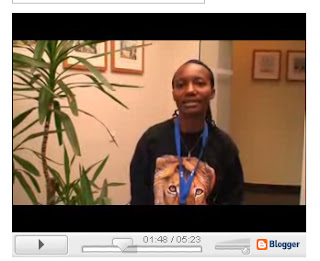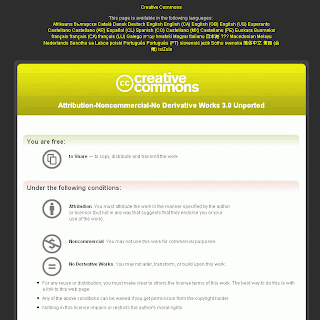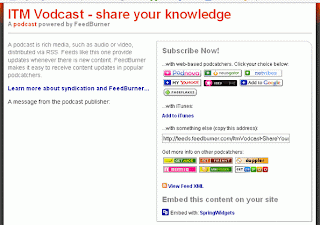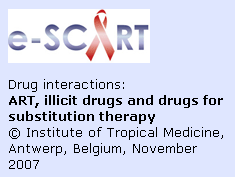This afternoon I will be delivering a hands-on workshop on vodcasting. This is my scenario, if you see something that I have missed, feel free to comment.
Scenario WS video blogging
What will we be doing: 10 easy steps for video blogging1. Update your computer
2. Get video compression software
3. Compress a video
4. Take a screenshot/snapshot of your movie
5. Get a video blog account
6. Get a creative commons license and insert it into the blog
7. Get a broadcasting account
8. Upload a video + tag it
9. Get RSS going
10. Comment on each others video posts
Extras: movies for mobiles, how to improve your blog…
Where does video blogging fit into the new media? In Web2.0 + a bit of talk about what web2.0 is within eLearning context.
Simple IT guidelines: Naming filesAvoid spaces or special characters in your filenames to keep your files working cross software. There are two simple solutions to keep your filename useable while you exchange it through different software’s:
• camel writing: GuidelinesOnFileNaming.ext
• use underscores guidelines_on_file_naming.ext
Structure your foldersFor videoblogging you will need:
• A folder with your original movies;
• A folder with your compressed movies;
• A folder for your screenshots.
Use logical names which you can search in the future! myVideoBlogsOnLearning…
Update your computerBefore beginning it is important to get all the recent plug-ins working. You need to update:
Your operating system’s updates;
Your browser; (
firefox )
Flash QuicktimeSometimes you need a java update as wellGet video compression software:Get your hands on a video compressing software. There are a lot out there, so feel free to roam about.
• Windows movie maker
• Mac’s iMovie
Compress a videoYou, who have brought a movie, please use that one. The ones who do not: ask me, I have a simple movie on my memory stick.
Best compression for video blogging: video for broadband 512 kbps
Depending on your own multimedia savyness, you could fine-tune your audio and video to your or your participants’ requirements.
Pointers for buying video compression software:• Does it have compression for mobile devices?
• Does it allow audio and video auditing?
• Does it offer cross platform compressions?
• Does it have a
SCORM possibility that will allow you to get your movies going on any Learning Management System (LMS)
Low resource settings: low resource settings demand a higher compression rate. This will decrease the quality, but it will enable them to look at the movies you have posted. This is where
tagging comes in handy. If you tag every movie according to the compression rate, it will allow viewers to get files for their settings with one simple click.
Take a screenshot/snapshot of your movieSelect your movie player. Play until you have reached the frame you want to use as a screenshot.
Shortcut (windows): alt + print screen
(Windows) All programs => accessories => ‘paint’
Canvas adjustment in ‘paint’ => image => attributes => 1,1
Paste your screenshot into ‘paint’ and save it in your screenshot folder.
 Get a video blog account
Get a video blog account There are all sorts of video blogs available (wordpress, blogger, …) we will look at Blogger, because it is really easy and free.
You go to blogger.com and you can just start to get your blog ready.
Get an account and WRITE DOWN YOUR PASSWORD. Each time you log into blogger they will ask it.
Use an email that you can check from this computer => you will need it to allow commenting on your posts later on.
Go into the ‘dashboard area’ and let’s look at the possibilities.
Get a creative commons license and insert it into the blogGet some copyright going.
Creative commons:
Choose the license you like. Get the
widget and insert it into your blog. Inserting any additional coding into a blog is done by accessing the dashboard and clicking on settings.
 Get a broadcasting account
Get a broadcasting accountA broadcasting account will allow you to keep all your movies on one place and to get different people posting video blogs. There are again a lot of broadcasting software’s out there (youtube.com, blip.tv…) we will use
blip.tv because it is free and it has come out as the best by users.
Let’s get an account and again write down your password.
If you choose a broadcasting account it is good to look at:• Cross platform functionalities (different formats possible);
• Mobile possibilities;
• Accessibility.
Upload a video + tag it Go to Blip.tv, login and click on ‘upload’. We will work our way through the different options.
Tagging is very important! If you use good tagging the chance of your video blogs being picked up by random surfers with a similar interest is increased.
Get RSS goingAn
RSS (really simple syndication) feed enables people from around the world to get regular/live updates of your blog. If for instance you are implementing a just-in-time eLearning program for team workers across the globe. They will immediately be notified once your new video blog post is uploaded. This will safe time for everybody.

You can add a feed of your own to your blog, but you can also use one of the many feed deliverers. We will use
Feedburner.
Comment on each others video postsCommenting on blogs is essential to keep your blog active and increase your reader potential. So let’s go and have a look at what all of us have done. I have put your blogs on my blog, so start from there to add your comments.
ExtrasPollish your blog:You can increase the userfriendliness of your blog by implementing some easy guidelines. For this I refer you to
Building a Better Blog site and
31days to building a better blog links.
Things to consider: CodecUse codec (compression/decompression) that is a standard.
The latest shift in video compression is the use of the
h264 codec, this codec however is not functioning on all equipment (mobile devices etcetera) yet. But its use is increasing. But still, do not depend on this yet.
Reusability of video filesGetting high polished movies is ok, but certainly not necessary to get higher outcomes. If you want to deliver content to low resource settings, or if you want your content to be reused later on, it is wise to keep the individual movies short and easy to access.
If you will be using video blogging as a tool for eLearning, it is good practice to keep the individual movies short. Cover one learning outcome per movie. But that is not enough. Try to keep the original scenes of your movie well structured in your ‘original movies’ file. This way, if certain learning content changes, you will only have to retake that small bit of the movie. If you tape everything in one big file, you will have to redo a lot of work.
If you link the content of one movie to a learning outcome, you can reuse it later on in a different context that is also in need for that particular learning outcome, hence saving you time.
QualityIf you have the means to invest in a good video studio, please do.
But setting outstanding standards for your audio and video quality or the surroundings for your recordings will have totally no meaning, if you do not get your learning outcomes covered in your movies. Content is as always the most important thing.
Engage your learnersIf you are aiming to address learners, make your movies engaged. Speak to the learners immediately, use the maximum scale of your voice (if you can go with 2 octaves, please use it), grab their attention, don’t just sit there…
Nice link of peer-to-peer video blogging:
http://www.friction.tv/home.php
A great freevlog tutorial on video blogging:
http://www.freevlog.org/index.php/category/tutorial/ Contact me
Inge de Waard
Blog :
http://ignatiawebs.blogspot.com





















